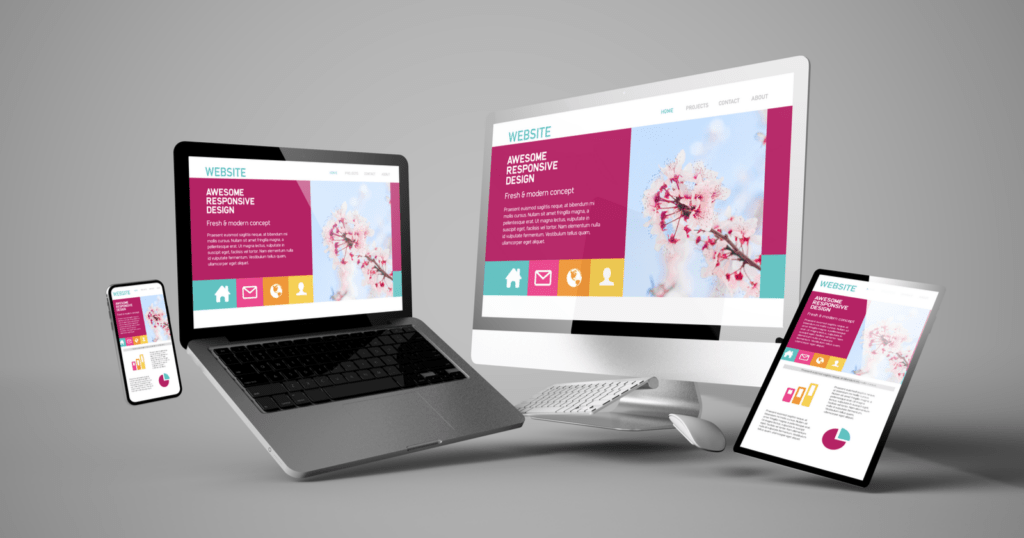Leading Tips for Creating an Impactful Web Site Design That Converts
To attain this, one need to take into consideration a variety of factors, including recognizing the target audience, prioritizing user experience, and optimizing for mobile systems. The critical use of engaging call-to-actions and a well-defined aesthetic pecking order plays a critical role in assisting individuals via their trip.

Understand Your Target Market
Recognizing your target audience is basic to effective site style, as it prepares for developing an interesting user experience. Recognizing who your individuals are, including their demographics, preferences, and habits, allows developers to customize the site's material, layout, and performance to fulfill specific requirements.
Performing complete marketing research is crucial in this process. Surveys, meetings, and analytics can give valuable insights into user expectations and pain points. By assembling this information, designers can produce individual personalities that represent different segments of the audience, making sure that design choices are notified and appropriate.
Furthermore, recognizing the target audience helps in picking proper style aspects such as color design, typography, and imagery that resonate with individuals. A site that speaks straight to its audience promotes a feeling of connection and count on, motivating longer gos to and greater conversion prices.
Ultimately, a user-centered approach to website layout not only boosts individual complete satisfaction but additionally sustains service goals by driving involvement and loyalty. By prioritizing the requirements and choices of the target audience, a website can efficiently offer its objective and attain preferred results.
Prioritize Customer Experience
To enhance the general efficiency of a site, prioritizing user experience (UX) is important (Website Design). A properly designed UX guarantees that visitors can navigate the website easily, locate information rapidly, and involve with material meaningfully. This results in boosted user fulfillment and higher conversion rates
Begin by executing user-friendly navigating. Menus must be practically structured, allowing users to find vital locations of the site with minimal initiative. Consistency in layout components, such as color design and typefaces, fosters knowledge, which is critical for keeping user involvement.
Additionally, consider the loading rate of your web site. A delay of just a couple of secs can result in substantial drop-offs, as individuals are less likely to wait on a slow-loading page. Streamlining pictures and enhancing code can boost performance and preserve visitors.
Additionally, clarity in content discussion is important. Use concise, interesting language and separate text with visuals to enhance readability. By focusing on user experience, you not only develop an extra enjoyable setting for visitors however also strengthen your brand name's trustworthiness. Ultimately, a focus on UX is an investment in the long-lasting success of your web site.
Maximize for Mobile Tools
Maximizing for Discover More Here smart phones is essential in today's electronic landscape, where a boosting variety of users gain access to sites via mobile phones and tablets. A mobile-friendly design not only enhances customer experience yet additionally plays a significant function in boosting online search engine rankings. To attain this, it is important to embrace a receptive layout that instantly readjusts to various display dimensions and positionings.

Packing rate is another essential variable; mobile users are generally much less patient YOURURL.com and anticipate rapid access to details. By focusing on mobile optimization, you ensure that your website stays competitive and effectively engages a broader audience.
Usage Engaging Call-to-Actions
An internet site's performance often rests on its capacity to guide site visitors towards preferred activities, making engaging call-to-actions (CTAs) important components of style. CTAs function as the pivotal points that direct users to involve with the website, whether that implies buying, signing up for an e-newsletter, or downloading a source.
To produce efficient CTAs, quality is paramount. Usage concise language that plainly communicates the activity you desire the individual to take.
In addition, think about using directional signs, such as arrowheads or pictures, to assist individuals towards these switches. By focusing on these components, companies can significantly enhance customer involvement, driving conversions and eventually accomplishing their site's goals.
Concentrate On Visual Hierarchy
Efficient site style relies heavily on a well-structured visual pecking order that overviews users through material seamlessly. By arranging elements in a manner that focuses on information, designers can improve customer experience and help with decision-making. This entails using dimension, shade, comparison, and spacing tactically to draw focus to one of the most critical parts of a web page.
Using larger fonts for headings and subheadings establishes a clear difference in between various sections, enabling customers to check content easily. Furthermore, using different shades for buttons and calls-to-action can capture individual attention and motivate interaction. Whitespace is an additional crucial component; it avoids mess and enables customers to concentrate on key messages without distractions.
Photos and graphics need to enhance the message while also sticking to the established hierarchy, enhancing the overall message (Website Design). Uniformity in design aspects, such as color design and typography, more enhances the aesthetic hierarchy, making navigation intuitive

Conclusion
To conclude, reliable web site design necessitates a thorough understanding of the target market, prioritization of user experience, and mobile optimization. The tactical use engaging call-to-actions and a distinct aesthetic hierarchy additionally improves individual involvement. By implementing these principles, sites can achieve greater conversion rates, guaranteeing that design components not just attract site visitors however also promote smooth navigation and communication. Eventually, a well-executed website layout acts as an important element in driving customer activities and achieving organization goals.